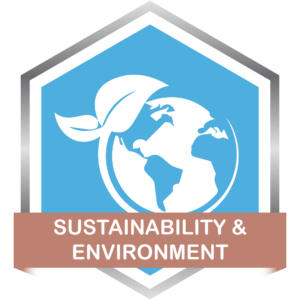About Course
Advanced Sustainable Retailing 
The Sustainable Retailing for a Sustainable Planet course accomplishes with a systematic review to promote retail sustainability, especially from a marketing perspective. As consumers become more conscious of the environmental and social consequences of their purchases, merchants are placing a greater emphasis on sustainability. Due to the fact that retailers represent a vital link in the majority of supply chains, they can play a crucial role in maintaining the sustainability of the entire supply chain.
Supermarkets and other retail outlets are playing an increasingly important role in our lives. Retail stores and the expanding number of malls in which they are found change the function and appearance of the urban environment by providing a natural focus for the community. That is why retailers need to objectively and comprehensively assess their influence on community behaviour. They need to face the challenges arising from their responsibility to improve social and environmental conduct.
Krishnaji Pawar, the CEO and founder of Beyond Smart Cities, is in charge of creating the Sustainable Retailing for a Sustainable Planet training course.
Specialises in developing sustainable design strategies for Green Building Certification Systems (LEED, GSAS, ACP, ISO 14001:2015, etc.), Energy Management, Energy Efficiency, Energy Audit, Building Commissioning, Environmental Impact Assessment, and Environmental Management Systems.
As their customers grow more aware of how their purchases influence the environment and society, retailers are beginning to place a greater emphasis on sustainable business practises. Retailers are an essential component of virtually all supply chains; hence, they have the potential to play a pivotal role in ensuring that the entire chain is environmentally responsible. In particular, they are in a position to encourage both upstream suppliers and downstream members of the supply chain (customers) to become more environmentally conscious by means of a circular economy.
This is an economic model in which products that have reached the beginning of their end-of-life cycle are brought back into the chain so that they can be used in subsequent cycles. Unfortunately, there is a lack of comprehension of sustainable supply chains in the retail industry. As a result of this, a significant number of retailers have not yet made a commitment to sustainability, and those that do may find it difficult to reach the sustainability goals they have set.
This course aims to fill this gap in existing knowledge by demonstrating how retailers can facilitate a sustainable supply chain by leveraging their position in the supply chain to encourage suppliers and customers to adopt sustainability goals. Specifically, this course will show how retailers can do this by leveraging their position in the supply chain to encourage sustainability goals. As a result of this, the Course identifies key issues that hinder retailers’ adoption of sustainable supply chains and advances a research agenda for academics to better educate retailers on how to effectively adopt and achieve sustainability goals. Additionally, the Course identifies key issues that hinder retailers’ adoption of sustainable supply chains.
Learning Objectives :
- Introduction as well as a General Overview of the Course
- Toward the Goal of a Circular Economy Via Sustainable Retailing That Emphasizes Reduction, Reuse, and Recycling
- The Crucial Role That Retailers Have in Enabling a Circular Economy
- Principal Methods of Behavioural Control
- Sustainable Retailing for a Sustainable Planet
- Overview and Information About Sustainability in the Retail Industry
Buildings and other physical spaces are also major contributors to environmental degradation since they store components like data, hardware, technology, and other such things that are responsible for an astounding 40 percent of all greenhouse gas emissions. So, one of the most important things that can be done to reduce one’s carbon footprint is to create sustainable areas that are linked, accessible, secure, and produce less pollution.
Course Content
Section 1: Introduction and Course Outline
-
06:22
-
L1.Introduction and Course Outline Handout




